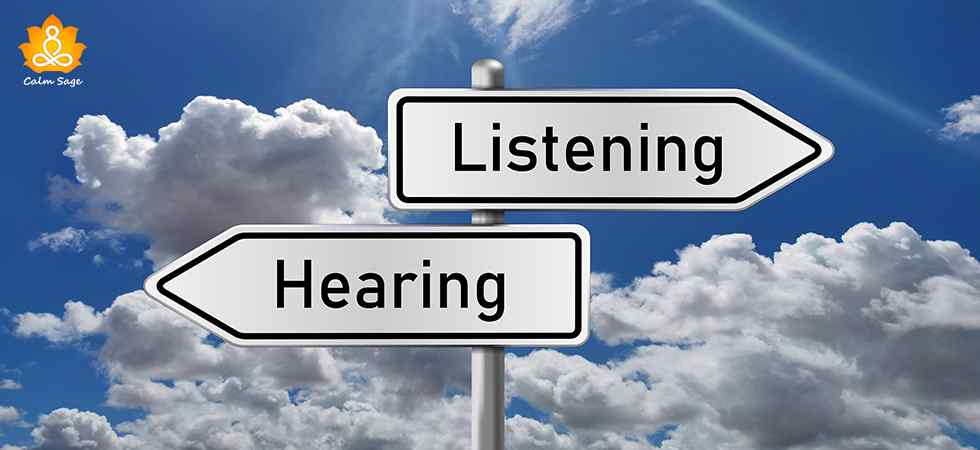
Active Listening: Hearing His Unmet Needs
Effective communication is the cornerstone of any successful relationship, be it personal or professional. While the ability to articulate one's own needs is crucial, the capacity for active listening, particularly in understanding the unmet needs of another, is equally, if not more, important. This essay will explore the critical role of active listening in discerning a man's unspoken needs, highlighting the techniques involved, the potential pitfalls to avoid, and the ultimate benefits of mastering this skill. Understanding a man's unmet needs, often expressed nonverbally or indirectly, requires a nuanced approach that goes beyond simple hearing and delves into the realm of empathetic comprehension.
The Significance of Unmet Needs
Unmet needs, regardless of gender, are the root of much dissatisfaction and conflict. They manifest as feelings of frustration, resentment, loneliness, and ultimately, distance in relationships. For men, societal expectations and ingrained cultural norms often hinder open expression of vulnerability and emotional needs. This necessitates a more attentive and perceptive approach from those seeking to understand their perspectives. The consequences of ignoring or dismissing these needs can be far-reaching, impacting everything from individual well-being to the success of interpersonal connections.
Societal Pressures and Masculinity
Traditional notions of masculinity often dictate that men should be strong, stoic, and self-reliant. These expectations can create a significant barrier to openly acknowledging vulnerability and seeking emotional support. The pressure to suppress emotions and maintain a façade of strength can lead to the bottling up of feelings and unmet needs, manifesting in various unhealthy ways such as aggression, withdrawal, or substance abuse. Consequently, understanding these underlying pressures is vital to effective active listening.
The Manifestation of Unmet Needs
Unmet needs rarely present themselves explicitly. Instead, they often manifest in subtle ways, requiring careful observation and interpretation. These can include: changes in behavior (increased irritability, withdrawal, or overworking), physical symptoms (headaches, digestive issues, sleep disturbances), verbal cues (sarcasm, complaints, indirect communication), and nonverbal cues (body language, facial expressions, tone of voice).
Techniques of Active Listening
Active listening is not merely hearing words; it's a multifaceted process involving engagement, empathy, and a genuine desire to understand. It requires a conscious effort to overcome pre-conceived notions and biases, and to approach the interaction with an open mind.
Creating a Safe Space
The first and perhaps most crucial step is establishing a safe and non-judgmental environment. This involves assuring him that his feelings are valid and that he can express himself without fear of criticism or ridicule. Verbal affirmations like "I want to understand how you're feeling," or "Tell me more about that," can significantly contribute to building this trust.
Nonverbal Communication
Pay close attention to nonverbal cues. Maintain appropriate eye contact, use open and welcoming body language, and mirror his posture subtly to demonstrate empathy and connection. Avoid interrupting, and instead, use nonverbal cues like nodding or encouraging facial expressions to show that you're engaged and listening attentively.
Reflective Listening
Paraphrase his statements to ensure understanding. This technique involves summarizing his words in your own terms, confirming your comprehension and giving him the opportunity to clarify if necessary. For example, "So, if I understand correctly, you're feeling overwhelmed by the pressure at work?" This demonstrates that you're actively listening and processing the information.
Asking Open-Ended Questions
Avoid yes/no questions that limit his responses. Instead, use open-ended questions like "How are you feeling about this situation?" or "What are your thoughts on this?" These questions encourage him to elaborate, providing more insight into his emotions and needs.
Empathetic Validation
Acknowledge and validate his feelings, even if you don't necessarily agree with his perspective. Statements like "That sounds incredibly frustrating" or "I can understand why you would feel that way" demonstrate empathy and understanding. Remember, the goal is to understand his experience, not to judge or offer unsolicited advice.
Potential Pitfalls to Avoid
Even with the best intentions, certain pitfalls can hinder effective active listening. Recognizing and avoiding these obstacles is crucial to achieving successful communication.
Interrupting and Offering Unsolicited Advice
Interrupting disrupts the flow of communication and demonstrates a lack of respect. Similarly, offering unsolicited advice before fully understanding his perspective can be perceived as dismissive and unhelpful. Focus on listening and understanding before attempting to offer solutions.
Minimizing or Dismissing His Feelings
Statements like "You shouldn't feel that way" or "Just get over it" invalidate his emotions and create a barrier to further communication. Always approach his feelings with empathy and respect, even if you don't fully share his perspective.
Making Assumptions
Avoid making assumptions about his feelings or motivations based on your own experiences or biases. Focus on his words and actions, and avoid projecting your own interpretations onto the situation.
Premature Judgment
Refrain from forming judgments about his character or behavior before fully understanding the context of his words and actions. Active listening requires a willingness to suspend judgment and approach the conversation with an open mind.
Benefits of Effective Active Listening
Mastering active listening yields numerous benefits, strengthening relationships and fostering deeper connections.
In conclusion, active listening is not a passive skill; it requires conscious effort, patience, and a genuine desire to understand. By mastering these techniques and avoiding common pitfalls, individuals can cultivate stronger, more fulfilling relationships with men by effectively addressing their often unspoken needs. The investment in learning and practicing active listening yields significant returns, fostering deeper connections, reducing conflict, and ultimately promoting well-being for both parties involved.







No comments:
Post a Comment
Note: Only a member of this blog may post a comment.